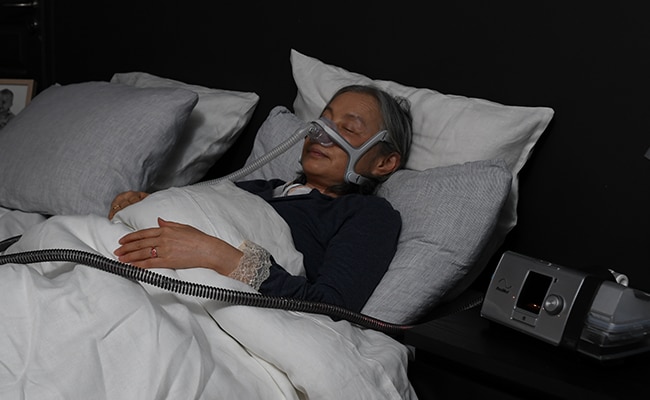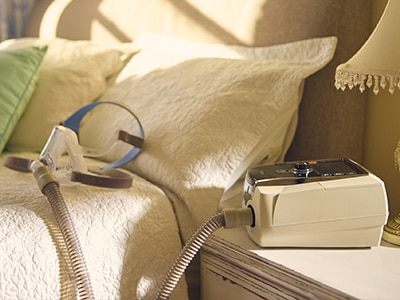Vsync

Maintaining therapy pressure and patient-device synchrony in the presence of unintentional leak.
What’s the problem?
Unintentional leak can affect triggering and cycling, compromise your patient’s treatment efficacy, undermine patient-device synchrony and cause discomfort. Unintentional leak can be caused by poor mask fit, movement during sleep and therapy pressure transitions.
What does Vsync do?
The Vsync algorithm helps to maintain reliable therapy pressure and patient-device synchrony in the presence of unintentional leak. It estimates the patient’s respiratory flow and rapidly, accurately and automatically detects and compensates for leak, usually within two to six breaths. Working together with TiControl technology they help maintain reliable therapy pressure and patient-device synchrony even in cases of significant leak.
How does it work?
- Vsync continuously scans for leak using a 10-second window, which ensures accuracy and limits the impact of breath-by-breath variations in flow. When Vsync detects a change in the leak flow, the scanning window is rapidly reduced to two seconds. Vsync enters re-synchronisation phase and increases the baseline flow while maintaining trigger and cycle in line with the patient’s breathing pattern. When patient-device synchrony is restored, it reverts to the default 10-second window.
- The smart Vsync algorithm recognises the difference between patient inhalation and leak. This reduces the risk that the ventilator will cycle your patient’s breath ineffectively or mis-trigger from EPAP to IPAP, out of sync with actual effort.
Download the Vsync card
Keen to keep this information handy? Download a print-friendly version.
Keep Exploring

ResMed Academy Online
ResMed Academy Online is designed to provide healthcare professionals with easy access to a variety of learning resources.

Ventilation machines
Whether your patient needs mechanical ventilation at home, in hospital or on the move, our versatile ventilation devices provide effective therapy for a wide range of respiratory conditions.

Technical support
Our team of experts work to answer your technical questions relating to ResMed sleep and respiratory devices and software.
This content is intended for health professionals only. Please refer to the user and clinical guides for relevant information related to any contraindications, warnings and precautions to be considered before and during use of the products.
Update: 03/2024

